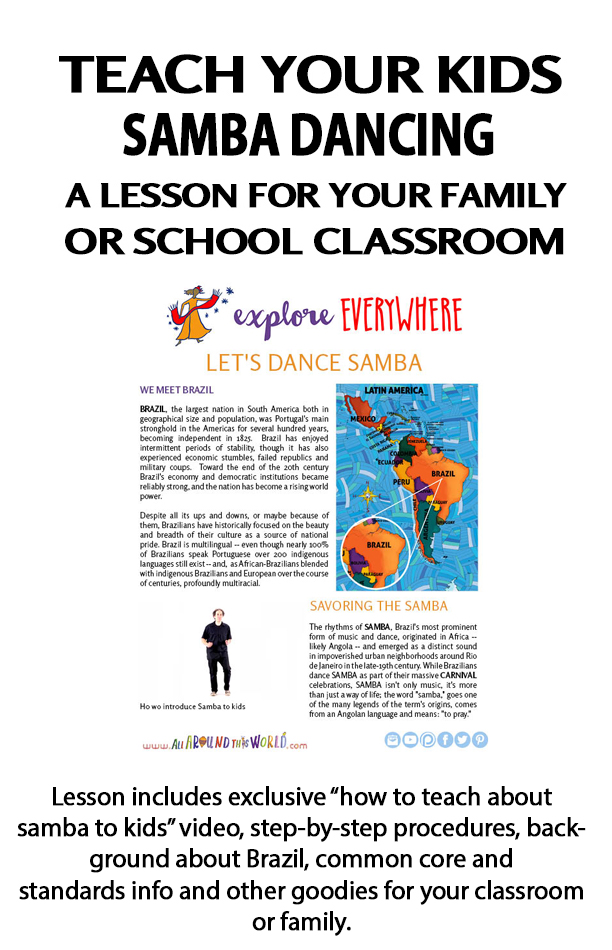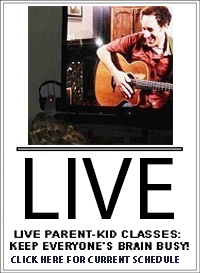 Samba is Brazil’s most prominent and arguably its most joyous music and dance form (though just one of many!). While Brazilians dance samba in public as part of their massive Carnival celebrations, parading in breathtaking numbers–literally in the tens of thousands, all members of community-building musical institutions known as samba schools–through the heart of Rio’s aptly named Sambadrome, they also dance at almost any time throughout the year, in almost any venue, to mark almost every occasion. (Check out a percussion unit practicing for Carnival.) The genre isn’t only music, it’s more than just a way of life; the word “samba,” goes one of the many legends of the term’s origins, comes from an Angolan language and means: “to pray.”
Samba is Brazil’s most prominent and arguably its most joyous music and dance form (though just one of many!). While Brazilians dance samba in public as part of their massive Carnival celebrations, parading in breathtaking numbers–literally in the tens of thousands, all members of community-building musical institutions known as samba schools–through the heart of Rio’s aptly named Sambadrome, they also dance at almost any time throughout the year, in almost any venue, to mark almost every occasion. (Check out a percussion unit practicing for Carnival.) The genre isn’t only music, it’s more than just a way of life; the word “samba,” goes one of the many legends of the term’s origins, comes from an Angolan language and means: “to pray.”
The distinctive dance motion and its energizing 2/4 rhythms may be an eastern Brazilian interpretation of rhythms that originated in Angola, the Congo, or even as a development of batuque music from Cape Verde, but is just as likely an amalgam of all those and more. It is certainly a form that began in Africa, traveled in the deep, dark holds of slave ships to the New World, and began to emerge as a distinct sound in impoverished urban neighborhoods around Rio de Janiero in the late-19th century. The first popular samba recordings appeared in the early 1920s and rapidly became part of Brazil’s soul.
Samba has now grown to become a blanket genre with a number of sub-genres, such as samba-enredo (the kind of samba performed at Carnival), samba-cancao (samba song), samba de breque (in which the song stops, or “brakes,” and the vocalist fills the spaces with declarations), samba-pagode (a form of party music that has become identified with pop), samba-reggae, and many more.
PLEASE NOTE: The lesson and embedded video are NOT “How to samba” tutorials. The goal of this lesson is to provide the tools for you to treat your very youngest students to their first introduction to samba and to inspire you to get up and dance together. (Your dance moves can’t be any worse than mine!) Ideally the lesson will be the first step on your and your students’ road to further samba exploration.
PERCUSSION:
One of the most exciting elements of samba is the onslaught of percussion instruments ensembles bring forth when they perform. While every instrument has its own sound and serves its own particular purpose, the cumulative effect is meant to so energize a listener that s/he has not choice but to dance. Some of the primary percussion items include the…
— CAIXA:
Very similar to a snare drum, though it has two or four wires/cables/snares that run along the top of the drum, rather than along the bottom like the typical drum kit snare. The caixa is played with drumsticks and either suspended around the neck on a strap or held on the shoulder to send the sharp rhythm out over a procession. Often musicians play several types or caixas with several types of rhythms. Hear the caixa in action.
— CUICA:
The cuica is a Brazilian “talking drum” (or, more descriptively, “laughing drum”). The drum only has one head. The drummer makes the distinct “laughing” sound by putting a hand inside the instrument and rubbing a wet cloth across a resonating cane of bamboo. Listen to the cuica and, if you understand Portuguese, learn about it too.
— SURDO:
The surdo is a large bass drum that provides the deep, underlying percussive motion for a procession. Performers tune two surdos to different notes and play them in both complementary rhythm and tone, emphasizing the downbeats of the measure. A third surdo plays a rhythm, known as a “cutter,” between the first two surdo beats. Watch some surdo drums at work in the forefront of this performance by PhillyBloco.
— PANDEIRO:
The pandeiro is a kind of tambourine that has a single head and jingles (“pratinelas”) arranged in pairs around its frame. Some masterful pandeiro playing.
— TAMBORIM:
A small single-headed hand drum hit by a thin stick to make a sharp sound that cuts across all the other percussion, usually on an off-beat. Often the tamborim players lead the procession. Watch the smiling Tamborim Unidos da Tijuca in motion in 2009.
— TIMBAL
(also spelled as TIMBAU): The timbal is a conical Brazilian kettle drum most often found in Bahia. (Not to be confused with the Cuban timbales.) Watch timbal drummers on the move with Percussao Brasileira.
More information:
The History of Samba | Want to learn to samba? Start here. | Want your baby to teach you how to samba? Start here.
COUNTRY: Brazil
KEY INSTRUMENTS: Agogô, Banjo (4-string), Bass, Caixa, Cavaquinho, Chocalho, Cuíca, Ganza, Güiro, Hand-repique, Pandeiro, Repinique, Saxophone, Surdo, Tamborim, Tantã, Trombone, Trumpet
SONG ON AATW: LATIN AMERICA CD: Bambo du Bambu
[mappress mapid=”16″ center=”-8, -60″ zoom=”3″]





Comments are closed.